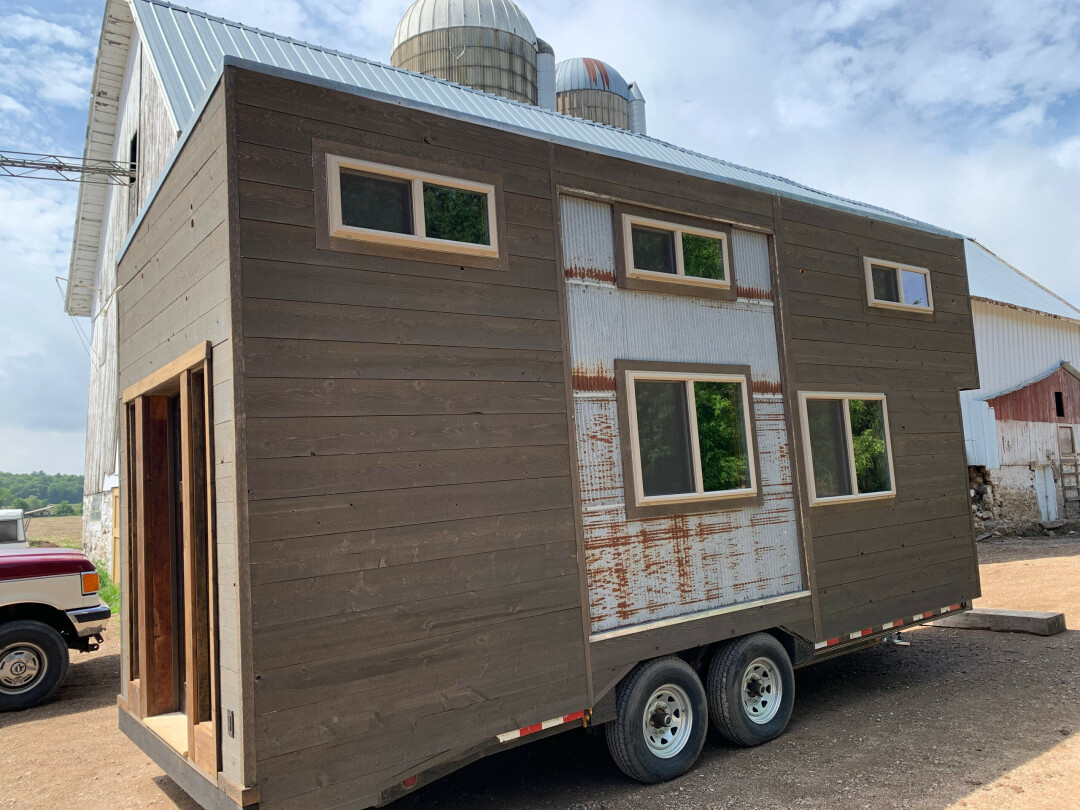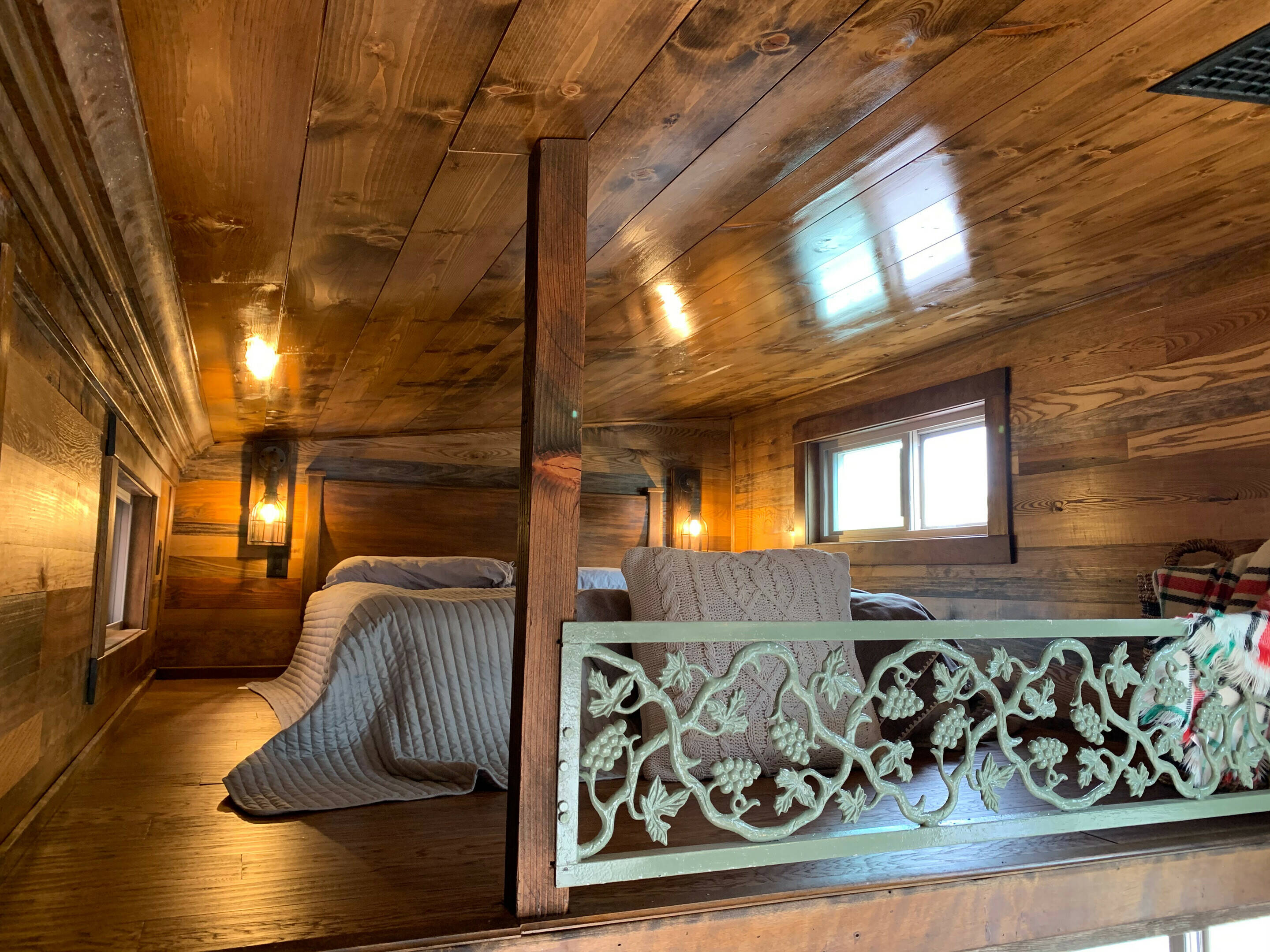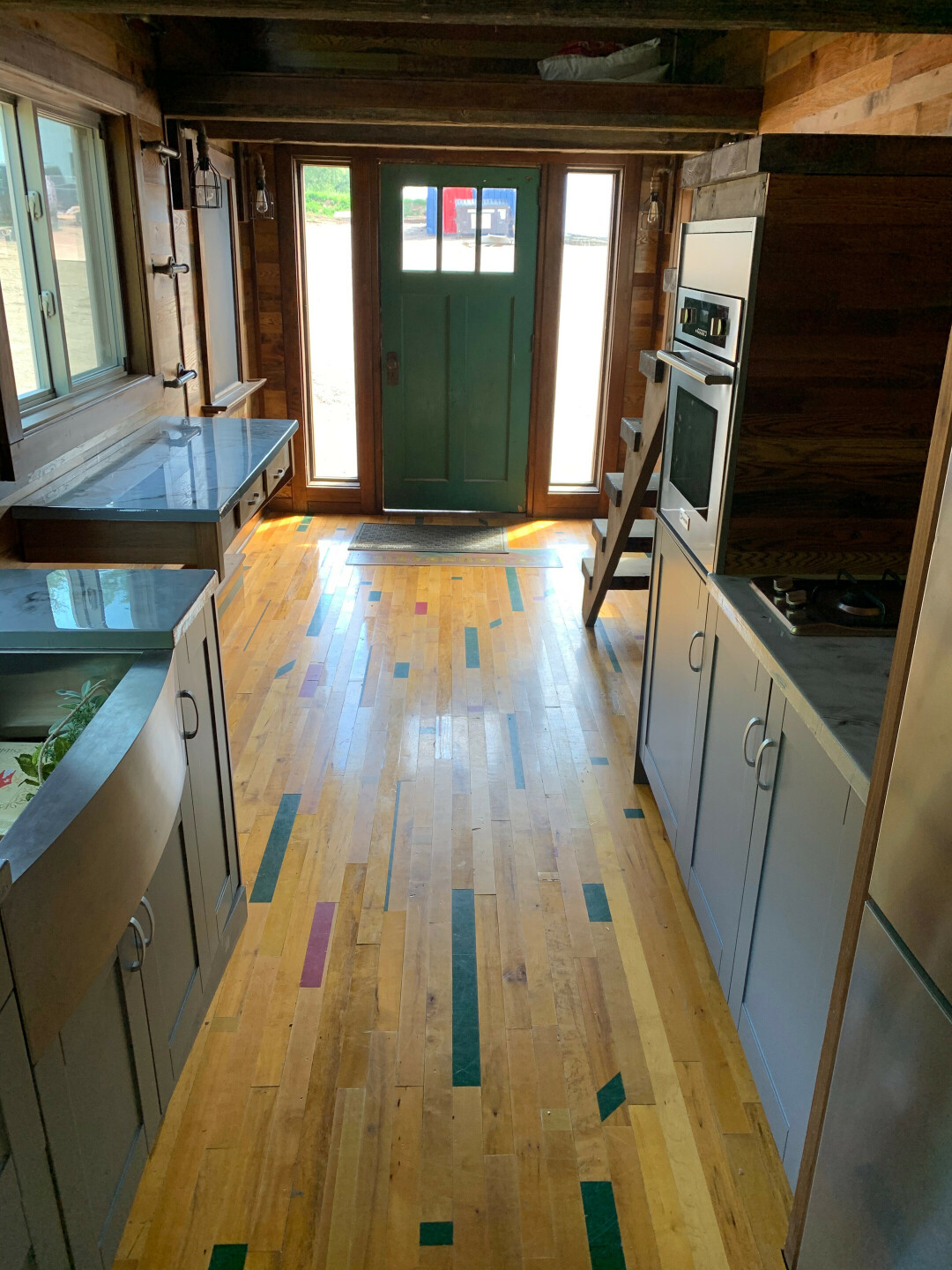Home Sweet (Tiny) Home
new housing project combines passion for preservation, sustainability, and affordable housing

If you’ve been looking to buy a house in this crazy market, the idea of owning a tiny home may have already settled on the real estate of your mind.
And, for those in the Chippewa Valley, your wish may soon be granted.
No Boundaries Tiny Homes – founded by Graham Barnes and Chad Dalhoe – recently made waves with the unveiling of their first tiny-home effort, The St. Pat’s Tiny Home.
“Who doesn’t care about the environment?” –Chad Dalhoe, No Boundaries Tiny Homes
Constructed of salvaged materials from the recently razed St. Patrick’s Catholic School, it serves as both a livable historical artifact and a shining example of the power of preservation and sustainability.
But it almost didn’t happen.
“One of the hardest things is getting the word out and educating people that when they see a building come down, a lot of times it’s only a day or two with a wrecking crew, and that stuff’s gone and in a landfill,” Dalhoe said.
Though Barnes and Dalhoe come from different backgrounds – Barnes in web development at a software company and Chad having worked in construction for many years – they came together over a shared love of preservation, sustainability, and affordable housing.
“We complement each other,” Barnes said.
“Who doesn’t care about the environment?” Dalhoe added. “People can have different views or different backgrounds but still agree on simple things like that.”

Deconstruction Over Demolition
In addition to building tiny homes, No Boundaries aims to establish a wrecking company with a sustainable twist.
While most demolition companies focus primarily on speed of demolition – with little regard for salvaging or preserving materials – No Boundaries looks to focus on deconstruction rather than demolition.
“In our case, deconstruction is the careful dismantling of a building or structure in order to reuse, repurpose, or recycle the materials,” Barnes said. “The deconstruction process allows building materials to be salvaged, versus a standard demolition in which the building is simply torn down and materials are hauled to a landfill.”
Prioritizing brains over brawn, the pair are using technology to assist and track their progress.
“We’ve got an algorithm we’re perfecting that determines how many trees we’ve saved per project, and how much landfill space, too,” Dalhoe said. “Because all that stuff that (we pull out) of there would get put in a landfill.”

Tiny Homes, Big Dreams
It takes but a brief tour of the mindful and reverential approach to the construction of the St. Pat’s Tiny Home to see that one thing is for sure: the future looks bright for No Boundaries.
In Chippewa Falls, the recently constructed Hope Village uses tiny homes to create housing for low-income individuals, with plans to add more affordable housing down the line.
No Boundaries has similar goals.
“Our lofty ambitions include affordable housing in Eau Claire,” Dalhoe said. But it doesn’t stop there.
“We want to put together a jobs program for guys that are 50 to 70 that know everything about construction, but maybe their knees are shot, their back is shot,” Dalhoe said. “These guys should be doing what they love. And if they’re doing it with buildings we’re keeping out of the landfill, and they’re building houses for homeless people who want to get back on their feet? I don’t know what municipality won’t want to get on board and set up something like that.”
“To be able to see that the work we’re doing actually is making a difference, like, wow,” Barnes said. “We got someone in a home who wouldn’t have been able to do that, or we got someone out here to work. That’s what we would define success as.”
Learn more about No Boundaries Tiny House at noboundariestinyhomes.com, or find them on Facebook, Twitter, Instagram, and YouTube.


